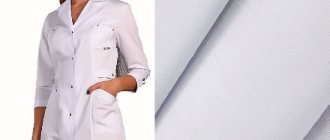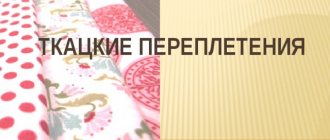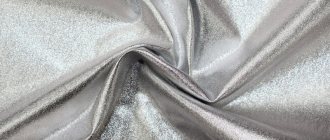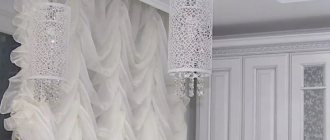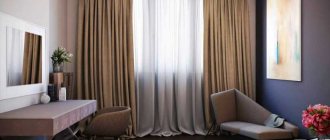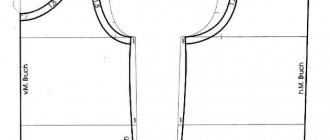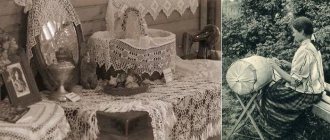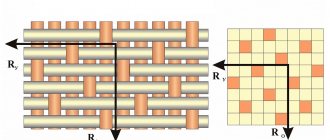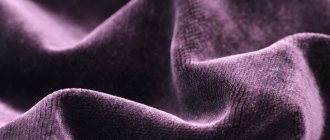Excursion into history
Historians find it difficult to name not only the year of chiffon’s appearance, but even the century. But no one doubts the homeland of the material, reminiscent of the delicate wings of a butterfly, a thin cobweb. The first to make it were the skilled craftsmen of China. In those days, chiffon clothes were incredibly expensive and were affordable only by noble ladies, representatives of the aristocratic class. The high cost was explained by the manual production method: thin fibers were tightly twisted by hand.
In the 18th century, chiffon became available to European fashionistas. Gradually more and more manufactories appeared. Operations previously performed manually were entrusted to machines. This reduced the cost somewhat. But the fabric was made truly accessible to a wide range of consumers by a technological revolution. The emergence of synthetic fabrics (nylon, polyester, nylon) had a favorable effect on the price, and many varieties with individual characteristics appeared on the specialized market.
The heyday of elegant, flowing fabric occurred during the times of Art Nouveau and Neoclassicism. A.P. Chekhov recalls the chiffon miracle in his story “A Guide for Those Who Want to Get Married.”
“Near-chiffon” debate: synthetic material or natural chiffon?
Once upon a time, silkworm cocoons served as raw materials for making fabric. Today, a composition made from pure silk is rare. Natural fibers increase the cost of the finished textile product and often cause marketing difficulties.
Since 1958, all-polyester chiffon has been on sale. It is more durable and cheaper. But in the specialized market there may also be a mixed material that attracts wear resistance without compromising hygiene.
The best chiffon samples today are produced in China, Romania, and Austria. And you can buy threads for making fabric in India and Russia.
Read more about the composition of chiffon
The modern textile industry produces noble, flowing fabric from different fibers.
| Thread type | Characteristics of raw materials |
| Natural |
|
| Artificial | The real beauty is viscose chiffon. Viscose, obtained by splitting cellulose fibers with caustic soda, gives the fabric softness, makes it flowy, pleasant to the body and comfortable to wear. |
| Synthetic |
|
During the production process, the threads are intertwined crosswise. This technology provides the sandy structure of chiffon and explains the presence of a barely noticeable mesh, which can only be seen when looking at the material in the sun.
The composition of chiffon and its properties
Different types of threads are used for production:
- Silk is a soft and flowing thread. Due to the refraction of the color it turns out shiny.
- Cotton - designed to produce thin, durable hygroscopic fiber.
- Viscose is an artificially created thread. It is durable. Designed for soft and comfortable items.
- Polyester is a strong and non-creaking thread.
- Polyamide is a fiber made from plastic.
Viscose
Synthetic viscose fabric: from an overview of the properties and types of material to rules for caring for things
more details
Cotton
What are the properties of cotton or cotton fabric? What are its areas of application?
more details
Polyamide
What is known about synthetic polyamide fabric and where is it used?
more details
Polyester
Popular synthetic fabric polyester: what is known about its characteristics and areas of application?
more details
Silk
Fame and luxury: a detailed review of silk fabric
more details
Basic properties:
- water absorption;
- thermoregulation;
- antibacterial properties;
- hypoallergenic;
- UV resistance;
- preservation of the original form;
- strength.
Types of fabric
There are different types of material on the textile market: everyday and festive, luxury and budget. They differ in appearance and characteristics. Today you can choose:
| 1. Crepe chiffon | For all its airiness, the fabric is dense and practically not see-through. Characteristic is the special alternation of crepe threads during the weaving process. |
| 2. Satin chiffon. | Combines satin smoothness and chiffon weightlessness. It has a mesmerizing glow of a matte surface. |
| 3. Jacquard chiffon. | Fabric with woven colored patterns provides an embroidered effect. It looks elegant and romantic. |
| 4. Pleated chiffon. | Characterized by smooth, as if sharpened, folds across the entire width. It makes elegant outfits that can periodically be seen on fashion catwalks. Particularly suitable for vintage and retro style clothing. |
| 5. Nylon chiffon. | The main advantages of this type are strength and ease of processing. Does not cause any difficulties with cutting, the edges are not prone to fraying. |
| 6. Double-sided (multi-chiffon). | Has 2 working surfaces. There is no difference between the front and back sides. |
| 7. Shanzhan chiffon. | Additional silk threads are woven into the fabric, softly reflecting light. The result is discreet shimmer. Leopard and spotted prints look especially impressive. |
| 8. Chiffon chameleon. | The composition contains thin threads of silk. It is they who, by refracting the rays, ensure a change in shade from dark to light and vice versa. |
| 9. Pearl chiffon. | Attracts the eye with its pearlescent shine. The charming pearl glow looks especially interesting on dance dresses, in particular ballroom dresses. |
| 10. Sprayed chiffon. | Can be colored, gold, silver. This variety is used to make pop costumes and extravagant evening dresses. Favorite material for designers to experiment with. |
| 11. Chiffon with lurex. | Shiny threads are woven into the fabric. Suitable for creating holiday clothes. Often used to decorate accessories: belts, crossbars. |
As for color, there are no restrictions. Chiffon can be plain (in different shades) or printed. Floral patterns are especially popular. Velvet embossing and gradation are also used, that is, a smooth flow of one tone into another.
Varieties of chiffon
Depending on the combination of fibers and their percentage, several types of chiffon fabrics are produced in the textile industry.
- Crepe chiffon. In this fabric, tightly twisted crepe threads are curled alternately to the right and to the left. This weaving method makes it possible to obtain a thin, slightly rough material with low creasing.
- Chiffon jacquard. A very elegant fabric, woven with repeating patterns reminiscent of embossing.
- Chiffon-satin. Smooth and shiny fabric used for sewing luxurious dresses, including wedding ones.
- Pearl chiffon. Soft, iridescent material with a pearlescent tint. It is mainly used for making concert or theater costumes.
- Shanzhan (chameleon). The fabric is produced using a special technology in which weft and warp threads are used in contrasting colors. Thanks to this characteristic, the fabric changes its color and shimmers depending on the lighting and viewing angle.
- Double-sided chiffon. Consists of two layers of related shades, it can be used to sew reversible items that look very luxurious.
We have listed the most common chiffon fabrics; in fact, there are many more of them. You can buy different types of fabrics in stores and online.
Application area of chiffon
Chiffon fabrics are widely used for the manufacture of women's elegant and casual clothing:
- long skirts;
- formal dresses, including wedding dresses;
- blouses;
- sundresses
The material is also used for sewing children's elegant clothes. It is also widely in demand in the production of accessories: brooches, hairpins, scarves, stoles. And, of course, light curtains and drapes and canopies are made from chiffon fabrics, which look very elegant due to their good drape.
Characteristics of flying material
The popularity of chiffon is explained by its basic characteristics, including:
- Strength. This quality is achieved through the inclusion of cotton and polyester fibers.
- Softness. This is the merit of viscose. The material causes a pleasant tactile sensation.
- Hygroscopicity. Cotton absorbs moisture well, but does not retain it, which allows you to avoid the “greenhouse” effect even in extreme heat.
- Wrinkle resistance. The addition of synthetics makes chiffon fabric not prone to creases and folds.
- Form stability. Even clothes with a complex cut do not stretch or deform. Samples with a high polyester content do not shrink during washing.
- The ability to thermoregulate. During wearing, heat transfer is not disturbed, which ensures comfort.
- Breathability. Air circulates freely between the fibers.
The density of the material is 105 g/m2. meter.
Fabric Features
Nowadays, various types of raw materials are used to create textile materials. What kind of fabric is chiffon and what is it made from? The following types of fibers can become the basis for creating the fabric.
- Silk. This fabric has an iridescent surface and is made from threads obtained from the cocoon of a silkworm butterfly.
- Cotton. Using special technologies, the fluffy mass is transformed into thin and strong threads that are highly hygroscopic. This chiffon fabric absorbs moisture well and allows air to pass through, allowing the skin to breathe.
- Viscose. To obtain the basis for chiffon, cellulose is split and this mass is run through special molds. In this way, threads are obtained, which are used to create the material.
- Polyester. Polyester-based fabric is durable and resistant to mechanical stress.
- Polyamide. These fibers are made from plastic, and they give the materials special strength.
In most cases, manufacturers combine natural bases and synthetics, resulting in different types of chiffon. These fabrics differ in appearance and quality; when creating products they can be used as the main or finishing material.
Why do buyers love translucent chiffon fabric?
Chiffon is associated with celebration, good mood, and comfort. Its advantages include:
- airiness: thanks to the low specific gravity, the outfits are practically not felt on the body. They do not hinder movements or put pressure on the shoulders;
- drapeability: chiffon fits well into folds, soft waves can be formed. This property is especially important when sewing home textiles and clothing of complex styles;
- antibacterial: the fabric does not attract moths and does not rot;
- color fastness: dyes penetrate deep into the structure of the material, so they are not washed out during washing, shades retain their saturation for a long time;
- durability: chiffon is resistant to tearing and abrasion. With proper care it will last for several seasons;
- hypoallergenic: chiffon is safe even for people with hypersensitivity. Especially if the composition is dominated by natural materials.
Chiffon is often called anti-stress textile. Pleasant tactility provides a healing effect: calms, improves tone, improves mood.
Application
- Chiffon is mainly used in the production of women's summer clothing. Airy sundresses, dresses, skirts, and blouses are made from thin, lightweight fabric.
- The fabric is used when sewing festive dresses for adults and children, both as the main fabric and as the top decorative layer, ruffles, frills, flounces.
- Wedding fashion is a separate area of application of matter. Delicate, romantic wedding dresses and accessories will appeal to many brides.
- The fabric is popular in dance circles; beautiful outfits for performances are made from it.
- Chiffon accessories are common: shawls, stoles, scarves, beach pareos.
- The material is used to create decorative elements and jewelry: hairpins, headbands, textile beads, brooches.
- It is possible to use chiffon as interior textiles, for sewing light tulle, curtains, canopies, canopies for cribs.
Briefly about the disadvantages of chiffon
Despite the huge arsenal of advantages, flowing material is not without its shortcomings:
- Chiffon is difficult to process: it slips when cutting. In addition, due to the fraying edges, large allowances are needed, which increases fabric consumption;
- capricious in care, requires a delicate attitude;
- chiffon is fragile: this applies to fabrics containing viscose, which lose strength when wet. Therefore, you need to use special tools for them. For example, sprays with paraffin or beeswax;
- susceptible to the formation of puffs that spoil the appearance. It is almost impossible to get rid of them; you should be careful and careful when wearing chiffon outfits.
In fact, all these shortcomings can be easily dealt with. And their presence is not a reason to refuse to buy chiffon.
Special types of chiffon
- Chiffon chameleon. Again, thin threads of silk create simply enchanting shifts from dark to light shades and vice versa. The efficiency of feeding products made from this expensive type of chiffon is affected by the intensity of lighting.
- Chiffon with glitter coating. This material, like no other, is suitable for realizing the most daring design ideas. Gold, silver and colored plating will favorably emphasize the dignity of a female figure dressed in evening dress.
- Chiffon chiffon. Due to the use of additional threads made of natural silk, which create the effect of light reflection, the fabric shimmers under the sun's rays. Leopard print looks most advantageous on such chiffon.
- Chiffon with lurex. Fabric shimmering with shiny threads is used to make festive clothing.
- Pearl chiffon. Light, opaque fabric with a pearlescent sheen is suitable for sewing dance outfits.
Areas of application of chiffon
Noble material is used for different purposes. Chiffon is chosen for making:
- elegant clothes: evening, ball, and wedding dresses look truly luxurious;
- home textiles: light curtains do not prevent the penetration of light into the room, and translucent canopies over cribs look gentle and evoke tenderness;
- accessories: fabric is used to decorate belts, hairpins, brooches.
Also, airy textiles can act as decorative elements - flounces, ruffles, frills.
What is made from chiffon?
The advantages of the material determine its wide range of use. Dresses, blouses, scarves, pareos, capes, scarves, skirts, and summer overalls are made from it. We can talk about both clothes that are intended to be worn every day, and about festive outfits. Even wedding dresses are created from it, combining luxurious shine and romantic airiness.
In addition to women's clothing, it is used in sewing interior textiles, in particular for tulle and curtains.
Production of chiffon products
Chiffon production volumes are consistently high. It enjoys constant popularity. The fabric is chosen by fashion designers of fashion houses. The collections of Valentino, Kenzo, and Chanel always contain models made of airy, slightly transparent material.
The most popular chiffon items
In any wardrobe there are weightless clothes that can make an image flirty or strict. The best sellers are:
- Women's blouses and dresses, pareos and sundresses. They can be worn daily, worn to formal events, or used for a beach holiday. Emphasize femininity and grace.
- Men's T-shirts, scarves. Modern men also follow fashion and do not shy away from elegant chiffon items that demonstrate good taste.
- Children's outfits. They look cute and elegant. The child feels comfortable in such clothes.
Light vests, cardigans, and stoles can also be made from this material. Chiffon is a good way to add festiveness and brightness to your everyday ensemble.
How to work with chiffon?
All varieties, with the exception of fabrics containing nylon, are difficult to process. To make cutting and sewing easier and to avoid mistakes, you should listen to the advice of experienced craftswomen:
- There are no strict requirements for chiffon when cutting. It can be cut using weft and grain threads. But the pattern must be well fixed on the canvas. To do this, you can use glue strips, special weights, and tailor's pins.
- Fraying edges creates many difficulties. To reduce them, use heated scissors or a rotary cutter.
- For sewing, choose thin threads and needles. Recommended stitch length is 2.5 mm.
- On a sewing machine, seam allowances are sewn with a French stitch or zigzag. On an overlocker - three-thread or four-thread seams.
If, when sewing clothes made of chiffon, it is assumed that there will be a lining, it is better to use woven interlining for this purpose. If desired, it can be replaced with organza. The main thing is that the lining must be carefully ironed.
Application of chiffon fabric
The peculiarity of chiffon, its versatility and durability were appreciated by the famous Coco Chanel; with her light hand, a variety of things appeared in the wardrobe of any woman or young girl that can be worn on weekdays, and especially on holidays.
You may also be interested in information about how exactly double-thread fabric is used and what its description is.
Blouses
By equipping her wardrobe with a chiffon blouse, a girl will always remain in trend - a variety of shades and styles will help you choose the most suitable option - a blouse made from coated fabric can be worn under trousers or an evening skirt.
Chiffon fabric with chameleon properties
Decorated with pleats - under a wide, low-cut sundress, and a simple cut blouse will be an indispensable type of clothing in the hot summer season under light shorts or linen trousers. But what are the names of fabrics for blouses and what they look like, you can see here.
Dresses
Summer and elegant, for celebrations and everyday wear - the choice of products from a wide variety of chiffon is simply huge. Designers from all over the world love to include fashionable chiffon dresses in their collections. Recently, the leopard print shade in dresses has gained great popularity, and a wide variety of styles will suit any young girl.
Dresses made of chiffon fabric
The flowing texture, wrinkle-resistance and silkiness of chiffon make it suitable for sewing dresses for any occasion. On the catwalks you can find very diverse styles that are sure to suit a young and slender girl - with a modest bodice and a draped floor-length skirt, drapery and a simple cut, deep necklines and a completely solid one, it’s simply eye-opening.
A summer sundress made of cotton chiffon with a simple cut will be a universal garment - it can be combined with a blouse or linen trousers, but you can wear it without anything, a simple and at the same time practical outfit.
Wide trouser ensembles made from combined fabrics are very popular - with printed trousers, and a completely smooth top in the form of a wide blouson, or tailored with different lengths or with bias front front panels. But you can see what Belarusian knitted dresses look like in large sizes in the article at the link.
Skirts
A variety of fashion trends and trends offer designers the widest possibilities for imagination - cut-off at the hips, with wide tails at the bottom, long skirts and year-over shapes, to the calves or completely to the floor - there is no limit to the variety.
Chiffon skirt
Cardigans and vests
In cool summer weather, you can buy yourself a cardigan, or a multi-layered jacquard long-length vest - the originality of the outfit will be ensured. But you can see how good Russian knitwear looks here.
Chiffon cardigan
Scarves and hats
This is a separate branch of the industry; on sale you can find not only the hats or light scarves familiar to every woman, but also poreos for summer holidays, capes and simple fabric that is suitable for wrapping yourself on the beach and not getting burned from the sun’s rays. But what kind of knitwear models there are from Ivanovo and what they look like can be seen here.
Chiffon cardigan
Features of caring for chiffon
In order not to spoil chiffon items, be sure to study the label with recommendations. But there are general rules:
- You cannot wash large-size and silk chiffon items yourself. They should be dry cleaned. You need to be careful with viscose. Only gentle hand washing without sharp compression is suitable for her. It is better to use blotting movements. Synthetic varieties can be machine washed in a protective case, choosing a delicate cycle.
- The water temperature for washing should not exceed +30 degrees. It is advisable to use gentle gel detergents.
- Do not squeeze or twist the fabric. Chiffon dries so quickly. You need to let the water drain. The item can be dried between 2 terry towels.
- Drying should be without clothespins. Only on hangers or unfolded. The washed material should not be exposed to direct streams of warm air or sunlight.
- It is allowed to iron chiffon from the inside out using steam or water. You should choose the “silk” or “nylon” mode. Do not touch the soleplate of the iron directly to the surface of the fabric. Ironing can only be done through damp gauze.
Chiffon wardrobe items cannot be stored folded. They must be on a hanger.
Chiffon fabric reviews
Christina” I ordered a long chiffon dress for a friend’s wedding and was pleased. The material did not cause me any discomfort. There are only advantages, I haven’t noticed any disadvantages for myself.”
Lyudmila “As an atelier master, I like this material for its diversity. There are a lot of colors and at a price you can find something that suits everyone.”
Angela “This material doesn’t wrinkle much, I wear blouses made from it to work with pleasure. Always a fresh, neat look.”
Maryana “When draped, it sheds a lot.”
Sasha “I bought a ready-made dress. In the summer, at parties, walks, it’s just right, it’s pleasant for the body, it’s not hot in it. You need to wash on a delicate cycle.”


